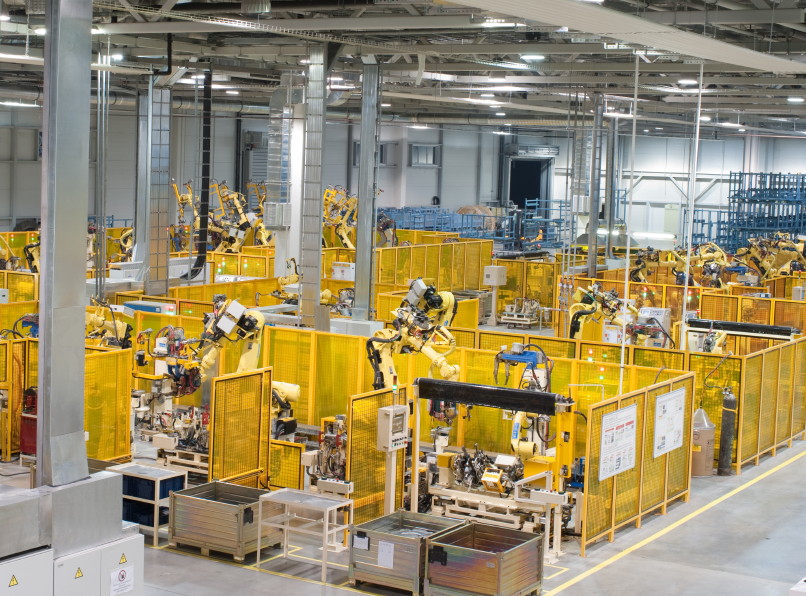With the popularity of factory automation growing, there are more and more predictions about what the future of automation will bring to the manufacturing industry. There are three major initiatives that have been suggested recently, one suggests that efficiency should be replaced by fulfillment, another looks at moving to the next step in information technology, while a third explores a change in how manufacturers might re-organize their workforce.
Initiative 1: Manufacturers must shift from being efficiency-driven to being fulfillment-driven. The paper notes: “Efficiency will continue to be important for future manufacturers, but they will acknowledge that an excess of efficiency tends to be inward-looking and risks distracting attention from the essential goal of fulfilling customer expectations. To do so, manufacturers will have to nurture a customer-centric culture among their employees; they will have to become more agile and flexible in fulfilling customer requests; they will have to pursue process execution excellence along with planning excellence.” This move away from an efficiency focus will be anathema to many engineers as well as c-suite leaders who insist on an overarching focus on efficiency. Though a focus on efficiency will not disappear from manufacturing’s future, current shifts in technology and processes already show that delivering to customer expectations will share the front seat with efficiency moving forward.
Efficiency has been the hallmark of factory automation since it began being introduced to the manufacturing process. After decades of efficiency, however, fulfillment of customers expectations is the next direction that manufacturers should consider. Even though there is always a way to increase the number of parts produced or decrease the amount of raw materials, there comes a point when being more responsive to the customer can actually improve the bottom line of the company more than the next increase in efficiency.
Initiative 2: Moving from the 2nd IT Platform to the 3rd IT Platform. The historical friction between operations and IT is only going to get more heated in many cases as IT technologies play an increasing role in production operations. It may have all started with Ethernet coming onto the plant floor, but it certainly doesn’t end there. The IDC paper states: “The transition from the 2nd IT Platform (client/server applications) to the 3rd IT Platform (based on cloud, mobility, social business, and Big Data analytics technologies) promises to create a real-time, collaborative, decision-making environment that will be pivotal to supporting manufacturers as they make the shift from a transactional to a real-time business.” IDC admits that the shift from the 2nd IT platform to the 3rd will be “very difficult to implement”; however, it is this initiative that will bring the fastest benefits to manufacturers. Evidence of this shift can already be seen in numerous areas—from the ability to create your own mobile HMI with technologies such as Opto 22’s groov to GE Intelligent Platforms’ recent roll out of Equipment Insight for OEMs.
Most automated factories have moved to some form of connectivity, the most popular connecting machines to servers using ethernet. New machines and technologies are bringing modern factories even further forward with wireless connectivity and storing data in the cloud that can be accessed from any part of the plant. While there are obstacles to factories updating their information technology, the opportunities open to manufacturers through updated IT can greatly increase productivity and flexibility.
Initiative 3: Moving away from organizational silos to self-forming teams. We’ve all heard about the problem of information silos in manufacturing for decades, but mostly in connection with specific approaches designed to break legacy technology silos. The more persistent problem, however, lies in corporate cultures that foster the informational silos regardless of how open the supporting technologies may be. IDC’s point here is that “with an embedded customer-centric culture and the 3rd IT Platform in place,” manufacturers can take the ultimate step toward becoming real-time businesses by breaking organizational and information silos and simplifying the hierarchical organization. “Enabled by the 3rd IT Platform (see graphic), future manufacturing employees will form communities of interest and focus. They will create dynamic teams to address issues and leverage opportunities through a higher degree of real-time visibility and the collaborative working environment. Self-forming teams will take informed decisions in real time based on evidence and will provide future manufacturers with the level of speed and flexibility required to be successful in the future.”
Previously it made sense to compartmentalize different parts of the organization. Each area had its own job to do and it was up to that group to make sure they did their part in the manufacturing process. Now, though, technology is making it possible, and more necessary, for teams to develop. Using the information collected by automation technology, these teams can analyze the data and work toward better manufacturing processes and be more flexible.
These three initiatives can, and should be, used together in manufacturing facilities. In conjunction with factory automation, these concepts can help the manufacturer not only become more efficient, but be more sensitive to their customers’ needs and be more successful all around.
Read more about the future of factory automation.


